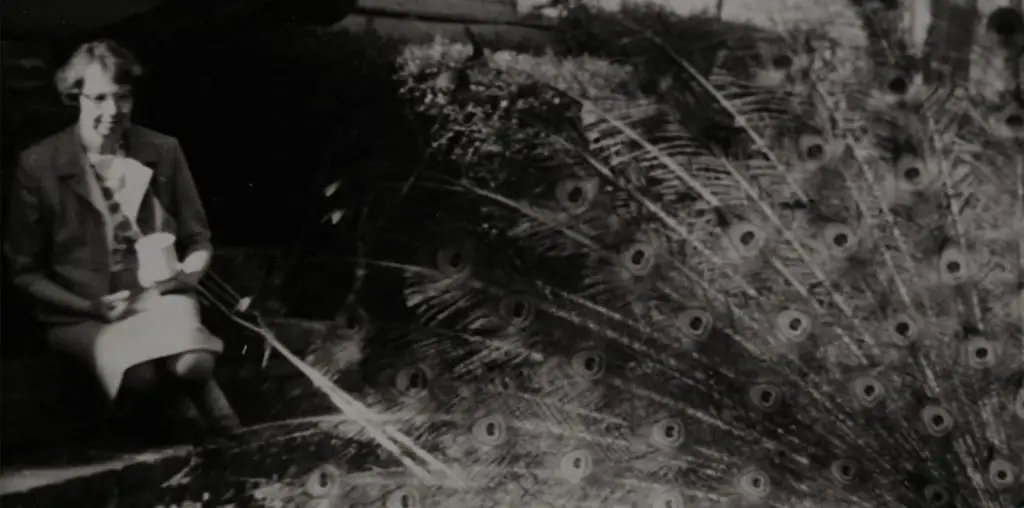
You know in you’re in for a good time when a film opens with a funeral procession where the mourners are dancing the rumba and the pallbearers are beating the coffin like a drum. Thus begins “La Ultima Rumba de Papa Montero,” a 1992 Cuban musical which is only now being made available for viewing in the United States. This modest but intriguing short feature offers a rare chance to enjoy the creativity of Cuba’s vibrant film industry and also allows a glimpse at how an imaginative musical can be created within the confines of a tight budget.
“La Ultima Rumba de Papa Montero” is actually two stories which criss-cross through the film’s 52 minute running time. The less interesting story focuses on a trio of bickering filmmakers who constant second-guess each other in trying to create a film about the murder of Papa Montero, a famous Cuban rumba singer who became entangled in a love triangle and was fatally stabbed during Carnival festivities in Havana. The second story, which fuels this production, is the rumba-inspired musical which recalls how Papa Montero met his untimely end.
Clearly working on a tiny budget which would deny the possibility of elaborate sets and production fancies, director Octavio Cortazar compensates with style and wit and brings his musical outdoors into the streets, bars, cemeteries and plazas of Havana, thus allowing his gifted cast of singers and dancers to turn these everyday settings into arenas of magic and kinetic energy. In watching this alfresco production, it is easy to recall the classic moments from Hollywood’s musicals where the magic of the genre seemed all the more jolting when it was taken out of the studios and brought into the traffic of real life (i.e. the Manhattan-rooted opening numbers in “On the Town” and “West Side Story” which upstaged the studio-bound numbers in both films).
In this film, sight of the glamourous Gabriela (the femme fatale in the love triangle that included Papa Montero and his glum rival Cheo) sashaying in her tight golden dress literally causes people to dance in the streets and break into song…yet shooting this in a neo-realist style among the dilapidated buildings and dusty avenues of Havana is inspired surrealism which both openly celebrates and happily mocks the traditions of film musicals. Likewise, the aforementioned opening sequence with the dancing funeral procession, which is followed by a balletic number at night among the mausoleums and headstones, provides an equally gleeful shock since these are staged in a genuine cemetery…thus giving respect for song and dance (cinema artifice) over respect for the dead (that thing called real life).
Sadly, “La Ultima Rumba de Papa Montero” shortchanges its audience due to the labored plotline following the filmmakers in their attempts to capture the Papa Montero tale on camera. At times the film feels like a Cuban spin on “The French Lieutenant’s Woman,” with the story getting deflated every time it is interrupted by the story-of-the-making-of-the-story. This filmmaking plotline supports the need for a global moratorium on that dullest of creations: movies about making movies.
It is also a bit strange that Papa Montero himself is something of a cipher. The titular character is briefly mentioned as being a famous singer, yet virtually no autobiographical evidence is ever presented nor does the character even get to perform a solo number that would justify his being the focus of a film. A solo number goes to an unidentified neighborhood denizen who sings about local crime and loose morals, which is depicted in a rapid montage featuring theft, stabbings and the ogling of lovely ladies.
However, these problems are more than brief hiccups when the music starts to pour and the dancing (performed by El Conjunto Folklorico Nacional de Cuba) takes control. The musical numbers here provide a riot of color, movement and excitement which could easily solve the current energy crisis if it was somehow harnessed for power-generating purposes. It is also worth noting that the film’s cast is overwhelmingly Afro-Cuban and it is to the filmmakers’ credit that the long-unacknowledged African experience within the Hispanic world is brought to the screen.
“La Ultima Rumba de Papa Montero” is imperfect, but it offers such an entertaining diversion that its happy highs more than compensate for its forgivable faults.
